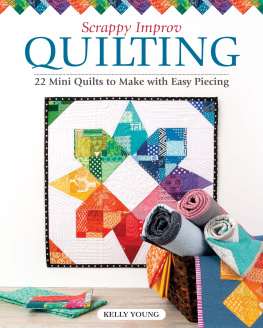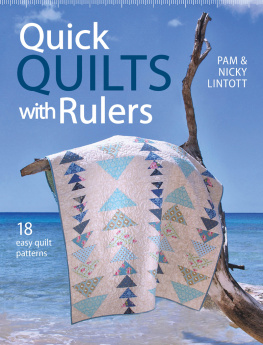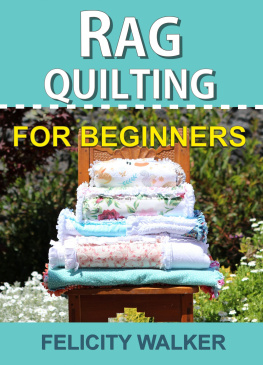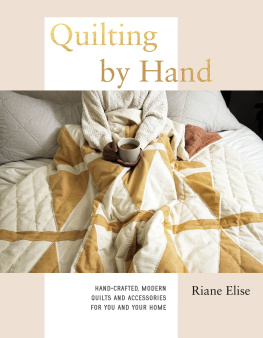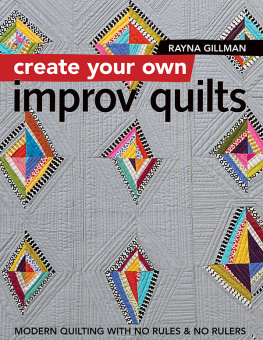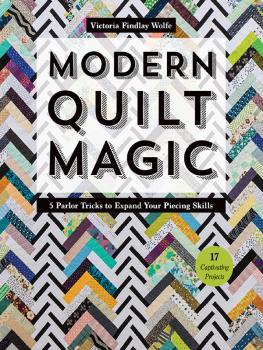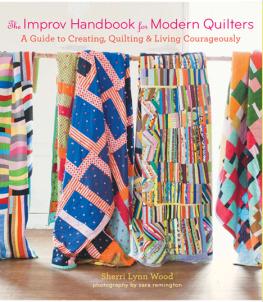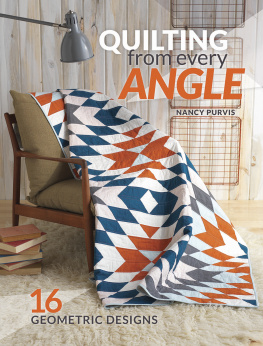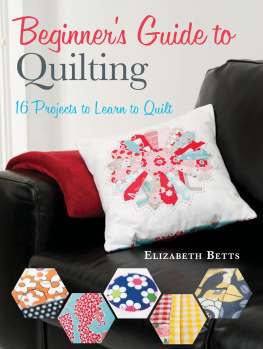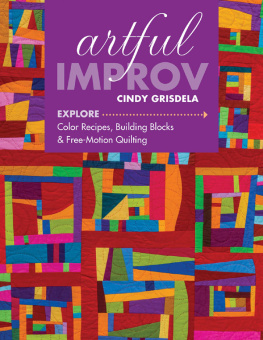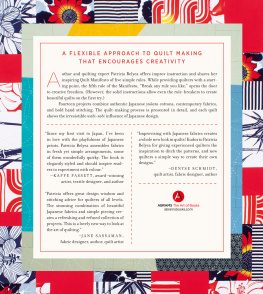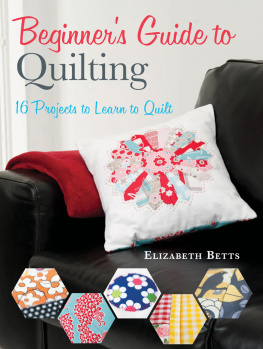Contents
Guide
Scrappy Improv
QUILTING
22 Mini Quilts to Make with Easy Piecing
KELLY YOUNG

Scrappy Improv Quilting
Landauer Publishing, www.landauerpub.com, is an imprint of Fox Chapel Publishing Company, Inc.
Copyright 2021 by Kelly Young and Fox Chapel Publishing Company, Inc., 903 Square Street, Mount Joy, PA 17552.
All rights reserved. No part of this book may be reproduced, stored in a retrieval system, or transmitted in any form or by any means, electronic, mechanical, photocopying, recording, or otherwise, without the prior written permission of Fox Chapel Publishing, except for the inclusion of brief quotations in an acknowledged review and the enlargement of the template patterns in this book for personal use only. The patterns themselves, however, are not to be duplicated for resale or distribution under any circumstances. Any such copying is a violation of copyright law.
Project Team
Editorial Director: Kerry Bogert
Editor: Amy Deputato
Copy Editor: Jean Bissell
Designer: Wendy Reynolds
Print ISBN 978-1-947163-62-1
eISBN: 978-1-60765-851-1
We are always looking for talented authors. To submit an idea, please send a brief inquiry to acquisitions@foxchapelpublishing.com.
For a printable PDF of the patterns used in this book, please contact Fox Chapel Publishing at , with 9781947163621 Scrappy Improv Quilting for Kids in the subject line.
Contents
INTRODUCTION
Scrap Savvy
Scraps, scraps, and more scraps! I dont know very many quilters who arent bursting at the seams with them, and sometimes its hard to figure out what to do with all of them. Thats where structured improvisation comes inthis technique allows you to play with your scraps using improvisational, or unplanned, piecing. Ill show you how to do it, and its quicker and easier than you think! Then, youll use your new improv fabric with other solids or prints, following a step-by-step, traditional quilt pattern. The result is a one-of-a-kind scrap masterpiece that is uniquely yours.
All of the designs in this book are mini quilts, which makes them perfect for dipping your toes into improv piecing if youre apprehensive, and theyre great projects for beginning quilters as well. No small project can be that scary, right?
Ill admit itthere was a time in my quilting life when I didnt understand the point of mini quilts. Even though I found them fun and satisfying to make because they are small and quick, I struggled with how to use them once they were finished. Ive since come to appreciate all the ways in which mini quilts are awesome.
Color and print variations are practically endless, and thats the beauty of this method. Your own scraps will result in a quilt that is unique to you. You might choose a different background fabric for a specific project, or even a different colorway altogether. Ive included color notes at the beginning of each project to help you choose scraps, but ultimately you will make these projects your own!

So... what can you do with mini quilts?
Think of them as artbecause they are! Anywhere you would hang a painting or picture, you can hang a mini quilt. Chapter 6 includes instructions for a hanging sleeve (see ) to make it easy to display your mini quilts. From nurseries, dens, and bedrooms to classrooms and office reception areas, any open wall space is a great spot for a mini quilt.
Use them in a tablescape. Smaller mini quilts look great as placemats, and larger ones are perfect as table toppers, creating a beautiful foundation for any table setting.
Drape them over an entry table or the backs of chairs. Mini quilts are a great way to make a room more inviting and welcoming.
Turn them into throw pillows for a sofa or bed. The Finishing Your Quilt section includes detailed instructions for turning your finished mini quilts into pillows (see ) to make your space look extra cozy.
Use them to give your home a pop of seasonal dcor. Several of the quilts in this book are seasonal, and mini quilts give your home a little touch of the holidays without too much fuss.
Give them as gifts. Handmade mini quilts are heartfelt treasures for friends, new babies, teachers, or anyone who needs a little extra happy!
CHAPTER 1
Tools, Tips, and Techniques
The structured improvisation technique uses fabric scraps, so this book assumes that readers have basic sewing knowledge, but dont worry if you are new to quilting or just new to improv piecing. I will cover everything you need to know to make the included projects from start to finish. Get ready to have some fun!


Tools of the Trade
Sewing machine: Its helpful to have a " (0.5cm) foot, a walking foot, and a free-motion or darning foot.
Rotary cutter: Improv piecing creates a lot of seams that youll need to slice through easily, so be sure to have a fresh, sharp blade.
Acrylic ruler: Have a 24" (61cm) ruler on hand for rotary cutting.
Cutting mat: Get the biggest mat your space will allow. You can thank me later!
Cotton thread: Use high-quality thread; my favorite is Aurifil 50 wt.
Straight pins and pincushion: Straight pins are helpful for holding pieces in place while sewing them together.
Scissors: The scissors you use for trimming improv pieces as you work dont need to be fancy, they just need to be sharp!
Seam ripper: A seam ripper is a necessary tool for fixing mistakes.
Iron and ironing board: Use your irons hottest setting when pressing your finished improv pieces and mini quilts.
Starch or starch alternative: I prefer using starch or a starch alternative over steam to keep my improv pieces crisp and easy to work with.
Safety pins: Use safety pins for basting; larger ones are easier to manipulate.
Painters or masking tape: Use tape for basting and for the tape-guided method (see ) of corner-to-corner sewing.
Marking pencil: Use a pencil for the line-guided method (see ) of corner-to-corner sewing.
Scrappy Piecing Perfection
When working with smaller pieces, its very helpful to keep everything nice and neat, which makes it much easier to put your mini quilt together. Here are a few tips:
Prepare your fabric. Press your fabric with a dry iron and either starch or starch alternative. The fabric will keep its shape, which makes it easier to handle and make precise cuts.
Cut your pieces accurately. On a small piece, even a very slight miscut can make a difference.
Shorten your stitch length.

